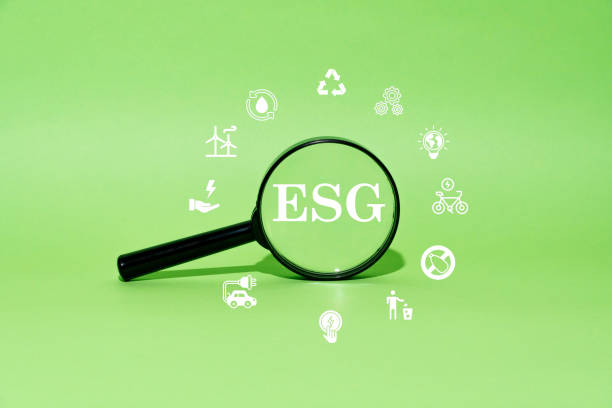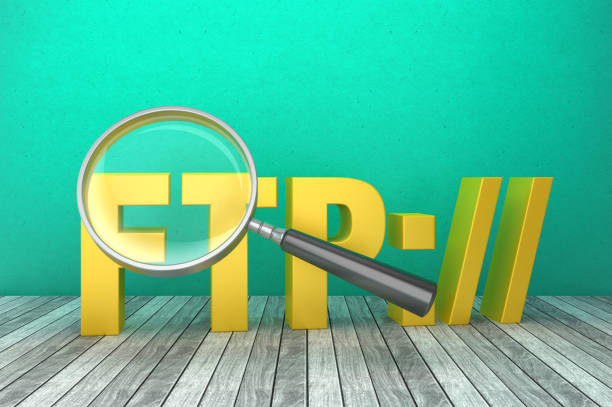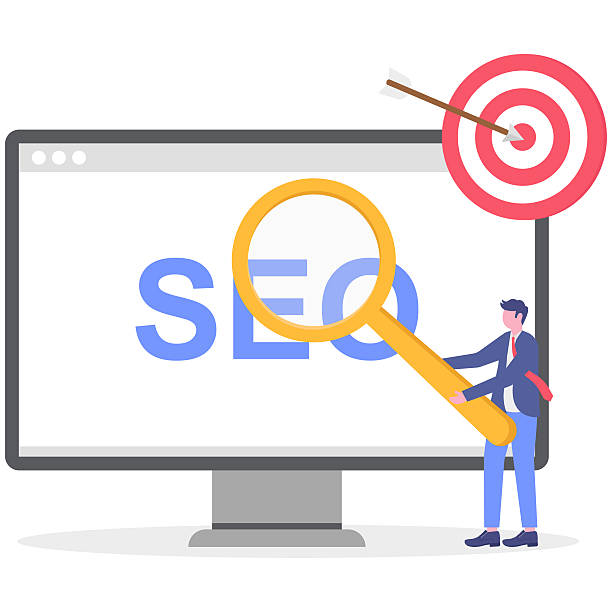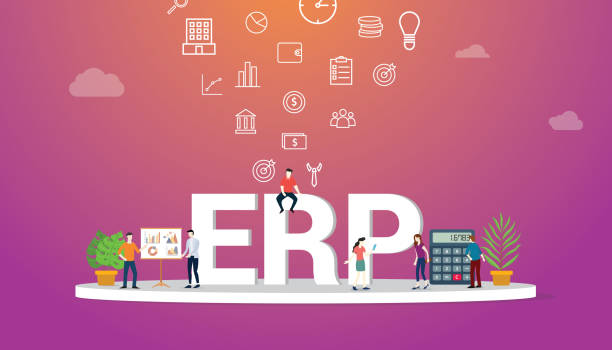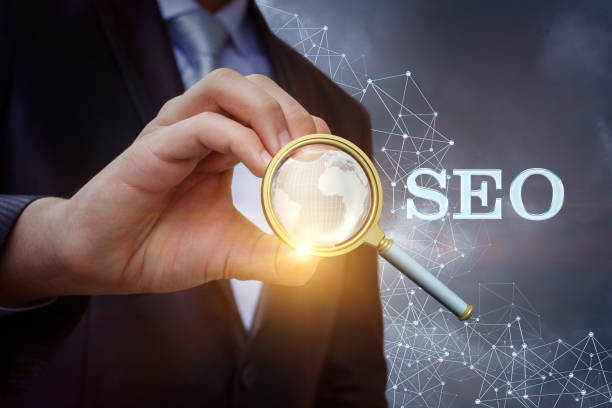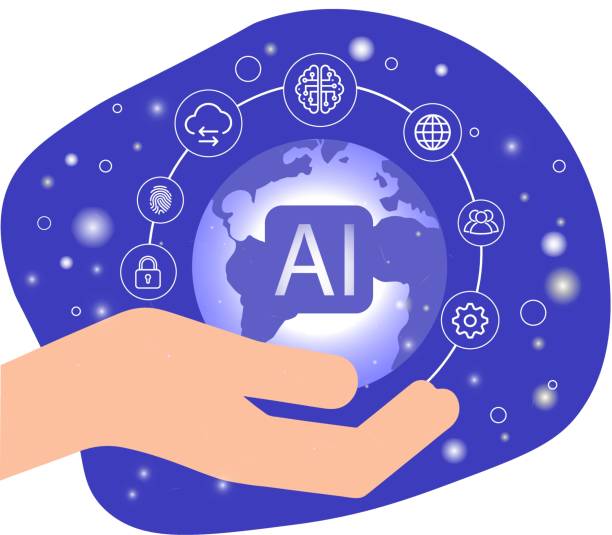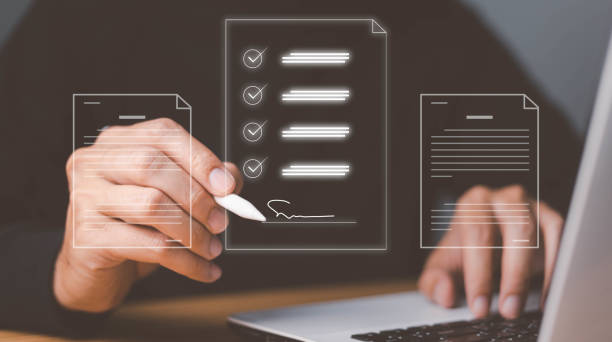What is On-Page SEO and Why Does it Matter?
On-Page SEO refers to the set of actions you take within your website to improve your site’s ranking in Google search results.
These actions include optimizing content, site structure, HTML tags, and other page elements.
The importance of On-Page SEO is that it helps search engines better understand your site’s content and recognize its relevance to user searches.
In fact, On-Page SEO provides a platform for search engines to easily #Crawling and #Index your site.
Without proper On-Page SEO, even with the best content, you may not be able to achieve a good ranking in search results.
On-Page SEO is one of the main pillars of Search Engine Optimization and should not be overlooked.
In fact, On-Page SEO is what helps you optimize your content for your target audience.
The first step in On-Page SEO is to accurately identify keywords related to your business.
Using keywords correctly in titles, meta descriptions, and body content helps search engines identify the main topic of your pages.
A website that is well-optimized for On-Page SEO provides a better user experience.
This means easy navigation, fast loading speed, and engaging and relevant content.
Google and other search engines consider user experience as an important ranking factor.
On-Page SEO helps businesses get seen and gain more organic traffic.
By improving your site’s ranking in search results, users are more likely to click on your link.
This organic traffic can help increase sales, brand awareness, and other business goals.
Are visitors leaving your online store before making a purchase? Don’t worry anymore! With Resaweb’s professional online store design services, solve the problem of not converting visitors into customers forever!
✅ Significant increase in conversion and sales rates
✅ Unique and attractive user experience
⚡ Contact us now for a free consultation!
Keyword Research and Choosing the Best Ones for On-Page SEO
Keyword research is one of the most important steps in the On-Page SEO process.
The goal of this research is to identify the words that users use to search for products, services, or information related to your business.
By knowing these keywords, you can optimize your site’s content based on them and improve your ranking in search results.
There are various tools available for keyword research, including Google Keyword Planner, Ahrefs, SEMrush, and Ubersuggest.
These tools help you find search volume, competition, and related keywords.
When choosing keywords, you should pay attention to a few things.
Firstly, keywords should be relevant to your business.
Secondly, keywords should have a reasonable search volume.
Thirdly, keywords should have reasonable competition.
After selecting keywords, you should use them in your site’s content.
However, you should avoid excessive use of keywords (keyword stuffing), as this can harm your site’s ranking.
Natural and intelligent use of keywords in titles, meta descriptions, body text, and Alt tags of images helps search engines understand the main topic of your pages.
Long-tail keywords are phrases that usually have more than three words and are very specific.
These keywords usually have less search volume, but have higher conversion rates.
Using long-tail keywords in your site’s content can help you attract more targeted traffic.
On-Page SEO without keyword research will not be effective.
This basic step is your guide in producing optimized content and attracting your target audience.
Click here to preview your posts with PRO themes ››
Optimizing Titles and Meta Descriptions to Increase Click-Through Rate
Titles and meta descriptions are among the most important elements of On-Page SEO, as they are the first things users see in search results.
Titles should be attractive, relevant, and contain keywords.
Meta descriptions should be a summary of the page’s content and encourage users to click.
The length of titles and meta descriptions should also be appropriate so that they are fully displayed in search results.
Titles and meta descriptions play an important role in increasing click-through rate (CTR).
Click-through rate is the percentage of users who click on your site’s link in search results after seeing it.
The higher your click-through rate, the better your site’s ranking will be.
To write attractive titles, use powerful words, numbers, and questions.
Titles should clearly state what your page is about and what value it has for users.
Meta descriptions should provide more information about the page’s content and convince users that by clicking on your link, they will find the answers to their questions.
To optimize titles and meta descriptions, you can use various tools such as Yoast SEO or Rank Math.
These tools help you write titles and meta descriptions based on best practices and preview them in search results.
Titles and meta descriptions should be unique for each page of your site.
Using duplicate titles and meta descriptions can harm your site’s ranking.
Optimizing titles and meta descriptions is an ongoing process.
You should regularly check the performance of your titles and meta descriptions and improve them if necessary.
On-Page SEO requires careful attention to detail, and these two elements are among the most important of these details.
Optimizing Content and Site Structure for On-Page SEO
Content is king! You’ve heard this sentence many times, but what does it really mean? In On-Page SEO, high-quality and relevant content plays a very important role in attracting organic traffic and improving site ranking.
Your content should answer users’ questions, solve their problems, and provide valuable information.
Site structure is just as important as content.
An organized and logical site structure helps search engines easily find and index your site’s pages.
Also, a good site structure helps users easily navigate your site and access the information they need.
To optimize content, you should pay attention to a few things.
Firstly, your content should be unique and original.
Copying other people’s content can harm your site’s ranking.
Secondly, your content should be up-to-date and accurate.
Outdated and incorrect information can erode users’ trust.
Thirdly, your content should be readable and understandable.
Using short sentences, separate paragraphs, and relevant images can help improve content readability.
To optimize the site structure, you should pay attention to a few things.
Firstly, the URLs of your site’s pages should be short, descriptive, and contain keywords.
Secondly, use internal links to connect different pages of your site.
Thirdly, use an XML sitemap to help search engines index your site’s pages.
On-Page SEO is an ongoing process.
You should regularly update your site’s content and improve your site’s structure.
Over time and with continuous effort, you can improve your site’s ranking in search results and attract more organic traffic.
How much does losing business leads due to an unprofessional website cost you? Solve this problem forever with professional corporate website design by Resaweb!
✅ Increased credibility and trust of potential customers
✅ Easier attraction of new business leads
⚡ Get a free consultation now!
Optimizing Images and Videos for On-Page SEO
Images and videos play an important role in the attractiveness and user engagement with your site.
But if your images and videos are not properly optimized, they can harm your site’s ranking.
Optimizing images and videos for On-Page SEO involves several steps.
Firstly, you should optimize the file name of images and videos.
The file name should be descriptive and contain keywords.
Secondly, you should use the Alt tag for images.
The Alt tag is text that is displayed instead of the image if it is not displayed.
The Alt tag should be descriptive and contain keywords.
Thirdly, you should reduce the size of images and videos.
Large images and videos can slow down your site’s loading speed and harm your site’s ranking.
To reduce the size of images and videos, you can use image and video compression tools.
Using high-quality images and videos can improve user experience and increase user engagement with your site.
Also, using relevant images and videos can help search engines better understand the main topic of your pages.
In addition, you can use images and videos to create engaging and diverse content.
Visual content can help you capture users’ attention and keep them on your site longer.
On-Page SEO is not limited to text.
Multimedia content also plays an important role in improving site ranking.
By optimizing images and videos, you can improve user experience, attract more organic traffic, and improve your site’s ranking in search results.
Another important factor in #SEO #images is using the appropriate formats.
Formats such as JPEG and PNG for images and MP4 for videos are usually the best option.
Also, using Lazy Loading for images can help improve site loading speed.
Click here to preview your posts with PRO themes ››
Using Internal and External Links to Improve On-Page SEO
Links play an important role in On-Page SEO.
Internal links help you connect different pages of your site and help search engines better understand your site’s structure.
External links are links that are given from your site to other sites or from other sites to your site.
External links can help improve your site’s credibility and ranking.
The use of internal links should be purposeful and relevant.
Links should be given to pages that are relevant to the content of the current page and provide more information on the topic under discussion.
Avoid overusing internal links, as this can harm the user experience.
External links should be received from reputable and relevant sites.
Spam and low-quality links can harm your site’s ranking.
Before linking to a site, make sure that the site has adequate credibility and quality.
Also, you should pay attention to the diversity of your external links.
Receiving links from different sites can help improve your site’s credibility and ranking.
Internal and external links both play an important role in On-Page SEO.
By using links correctly, you can help search engines better understand your site’s structure, increase your site’s credibility, and attract more organic traffic.
On-Page SEO is more than just keywords and content optimization.
Creating a strong internal link network and receiving high-quality external links are among the key factors in SEO success.
Don’t forget that internal links should be to pages that create added value for the user.
Optimizing Site Speed and Mobile-Friendliness
Site speed and mobile-friendliness are two important factors in On-Page SEO that directly affect user experience and site ranking in search results.
Users expect sites to load quickly.
If your site loads slowly, users may leave your site and visit a competitor’s site.
Site loading speed depends on various factors, including the size of images and videos, coding quality, server speed, and the use of CDN.
You should pay attention to these factors to optimize site speed.
Mobile-friendliness means that your site is displayed correctly on mobile devices.
Given that a large number of users access the Internet through mobile devices, mobile-friendliness is a necessity.
To make your site mobile-friendly, you should use responsive design.
Responsive design means that your site automatically adapts to the screen size of the user’s device.
Site speed and mobile-friendliness are two important factors in On-Page SEO that you should pay special attention to.
By optimizing site speed and making your site mobile-friendly, you can improve user experience, attract more organic traffic, and improve your site’s ranking in search results.
On-Page SEO means paying attention to details, and site speed and mobile-friendliness are two prominent examples of these details.
A fast and mobile-friendly site not only earns a better ranking in Google, but also provides a better user experience.
| Factor | Description |
|---|---|
| Image Size | Reducing image size using compression tools |
| Coding Quality | Optimizing HTML, CSS, and JavaScript code |
| Server Speed | Choosing a high-quality and fast hosting |
| Using CDN | Using a content delivery network to increase site loading speed |
Using Schema Markup to Improve Display in Search Results
Schema Markup is code that helps search engines better understand your site’s content.
By using Schema Markup, you can provide more information about your products, services, events, and other types of content to search engines.
Schema Markup can help improve your site’s display in search results.
By using Schema Markup, you can display additional information such as ratings, prices, and images in search results.
This information can help users make better decisions and click on your site’s link.
There are different types of Schema Markup that you can use for different types of content.
For example, you can use Schema Markup for products, services, events, articles, videos, and instructions.
To use Schema Markup, you need to add the Schema Markup code to the HTML of your site’s pages.
You can use various tools to generate Schema Markup code.
After adding the Schema Markup code, you should test it using the Google Rich Results Test tool.
Schema Markup is a powerful tool that can help improve your site’s On-Page SEO.
By using Schema Markup, you can help search engines better understand your site’s content and improve your site’s display in search results.
Modern On-Page SEO is looking for solutions that help search engines properly understand the site’s content.
Schema Markup is one of these solutions that can have a significant impact on site ranking.
Does the current design of your online store cause you to lose customers and sales?
Resaweb is your solution with modern and user-friendly online store designs!
✅ Dramatic increase in conversion and sales rates
✅ Creating strong branding and gaining customer trust
⚡ Get a free online store design consultation from Resaweb!
Fixing Site Errors and Improving User Experience
Site errors and poor user experience can harm your site’s ranking.
Site errors can include 404 errors, server errors, and other types of errors.
Poor user experience can include difficult navigation, slow loading speed, and irrelevant content.
To fix site errors, you should regularly check your site and identify and fix existing errors.
You can use various tools such as Google Search Console to identify site errors.
To improve user experience, you should pay attention to factors such as site navigation, site loading speed, and content quality.
Site navigation should be easy and understandable.
Users should be able to easily navigate your site and access the information they need.
Site loading speed should be fast.
Users should not have to wait for your site’s pages to load.
Site content should be high-quality, relevant, and engaging.
Users should enjoy reading your site’s content and gain valuable information.
Fixing site errors and improving user experience are two important factors in On-Page SEO that you should pay special attention to.
By fixing site errors and improving user experience, you can attract more organic traffic and improve your site’s ranking in search results.
On-Page SEO is not only about optimizing for search engines, but also about optimizing for users.
A site without errors and with an excellent user experience will naturally have a better ranking in Google.
| Error Type | Description | Solution |
|---|---|---|
| 404 Error | The requested page was not found | Redirecting the page to a related page or creating a custom 404 page |
| Server Error | There is a problem with the server | Checking server logs and fixing the problem |
| Duplicate Content | Having identical content on multiple pages | Using the Canonical tag or redirecting pages |
Analyzing and Continuously Improving On-Page SEO
On-Page SEO is an ongoing process.
You should regularly analyze the performance of your site’s On-Page SEO and improve it if necessary.
You can use various tools such as Google Analytics and Google Search Console to analyze the performance of your site’s On-Page SEO.
Google Analytics helps you track your site’s traffic, view user behavior on your site, and measure your conversion rate.
Google Search Console helps you track your site’s performance in Google search results, identify your site’s errors, and submit index requests.
By using these tools, you can identify the strengths and weaknesses of your site’s On-Page SEO and develop a plan to improve it.
On-Page SEO is a long-term investment.
With continuous effort and continuous analysis and improvement, you can improve your site’s ranking in search results and attract more organic traffic.
On-Page SEO is not an exact science, but an art.
You should constantly experiment and learn what works for your site and what doesn’t.
On-Page SEO requires patience and perseverance.
The results of On-Page SEO may not be immediately visible, but over time and with continuous effort, you can achieve significant results.
Finally, correct On-Page SEO helps more potential customers become familiar with your business and become actual customers.
Frequently Asked Questions
| Question | Answer |
|---|---|
| What is On-Page SEO? | On-Page SEO involves optimizing elements that are directly under your control and within your website. The goal is to help search engines better understand the content of the page and improve its ranking. |
| Why is On-Page SEO important? | On-Page SEO gives search engines clear signals about the content of the page, improves user experience, and increases the chance of attracting organic traffic. |
| What are the most important factors of On-Page SEO? | Keywords, Title Tag, Meta Description, URL structure, quality content, image optimization, and internal links are among the most important factors. |
| What is the role of the Title Tag in On-Page SEO? | The Title Tag is one of the most important signals for search engines and users that specifies the main topic of the page. It should include the main keyword and be attractive. |
| How important is the Meta Description? | The Meta Description does not directly affect ranking, but it can improve the click-through rate (CTR) by encouraging users to click. |
| How to optimize images for On-Page SEO? | By using a descriptive file name, appropriate Alt Text containing keywords, compression to reduce size, and correct dimensions. |
| What is the impact of Internal Links on SEO? | Internal Links help search engines discover and index site pages, distribute credibility (PageRank) throughout the site, and improve user navigation. |
| Is page loading speed one of the On-Page SEO factors? | Yes, page loading speed is a critical factor in On-Page SEO and user experience. Slower pages can lead to higher bounce rates and lower rankings. |
| What are the characteristics of quality content for On-Page SEO? | Quality content should be comprehensive, unique, relevant, reliable, readable, and fully address users’ needs and questions. |
| How can keywords be used in content? | Keywords should be used naturally in the title, subheadings, first paragraph, body text, and Alt Text of images. Avoid Keyword Stuffing. |
And other services of Rasa Web Advertising Agency in the field of advertising
Smart Conversion Rate Optimization: A fast and efficient solution for user engagement with a focus on attractive user interface design.
Smart Marketing Automation: A creative platform to improve customer acquisition with dedicated programming.
Smart Marketplace: A fast and efficient solution to increase site visits with a focus on intelligent data analysis.
Smart Conversion Rate Optimization: A fast and efficient solution to increase sales with a focus on optimizing key pages.
Smart Google Ads: A professional solution to increase site visits with a focus on optimizing key pages.
And over a hundred other services in the field of internet advertising, advertising consulting and organizational solutions
Internet Advertising | Advertising Strategy | Advertorials
Resources
What is On-Page SEO?
,On-Page SEO Guide
,On-Page Optimization
,The Comprehensive Guide to On-Page SEO
? Are you ready to boost your business in the digital world? Rasaweb Afrin Digital Marketing Agency, specializing in SEO, content marketing and responsive website design, is with you to reach the peak.
📍 Tehran, Mirdamad Street, next to the Central Bank, South Kazerun Alley, Ramin Alley No. 6
“`


